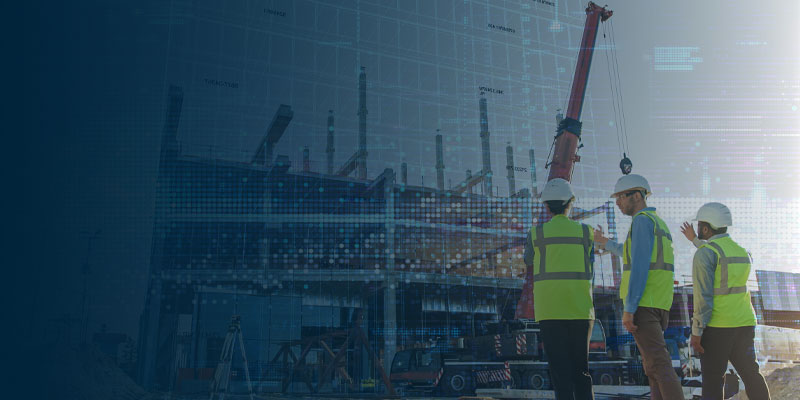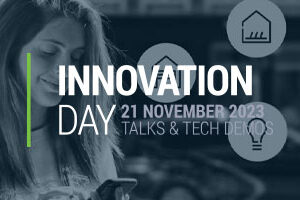Amid the challenges of economic uncertainty, changing regulations, the still-meaningful inflation, and the higher interest rates that go with it, the European construction sector is also grappling with a persistent shortage of skilled labor. But there is room for optimism, as this multi-trillion euro market that represents over 10% of European GDP could benefit greatly from digital innovation, automation and robotics, which bring immense promise and potential for real, transformative change.

Why the foundation is cracking
The construction industry has long been the backbone of economic growth, but it now finds itself at a crossroads. External pressures like economic uncertainty, regulatory shifts, and workforce shortages are forcing companies to adapt or risk falling behind. Unlike previous downturns, today’s challenges are structural, requiring long-term strategic solutions rather than short-term fixes.
- Economic uncertainty and inflation have driven up material costs and project financing expenses, putting significant strain on contractors. High interest rates make borrowing more expensive, limiting investment in new projects and slowing industry growth.
- At the same time, changing and often vague regulations complicate project execution. New sustainability and safety standards require companies to adapt, but unclear guidelines create confusion and slow down compliance efforts.
- Perhaps the most pressing issue is the shortage of skilled labor. The European Construction Industry Federation already reported in 2023 that Belgium has 22,000 unfilled construction jobs, Germany 52,000, and the Netherlands 27,000. With an aging workforce and upcoming retirements, the industry faces a critical skills gap.
Despite these difficulties, the industry has an opportunity to turn adversity into progress. Digital innovation can help businesses improve efficiency, streamline operations and services toward their stakeholders and clients, and reduce reliance on scarce labor. Those who invest in new technologies today will shape the future of construction tomorrow.
The digital toolbox of opportunities
While the construction industry faces mounting pressures, innovation is proving to be more than just a way to keep up. It’s becoming an operational differentiator. Many digital technologies that have already transformed other industries can be readily applied to construction, helping companies streamline operations, reduce costs, and build smarter and faster. Let’s go through the digital tools that are reshaping the way buildings are designed and constructed.
To mitigate economic uncertainty and inflation
- AI can use past project data, weather patterns and economic trends for smarter planning and anticipating project delays. Similar predictive solutions already enhance road safety—why not apply them to construction?
- Building information modeling (BIM) enables precise planning of materials, workforce, and equipment, an approach we’ve already implemented for Wienerberger.
- Digital twins allow testing and validating appliance and utility choices based on realistic model simulations.
- By equipping machinery with sensors and predictive maintenance, issues can be detected before breakdowns occur.
To keep up with changing safety & compliance regulations
- AI can streamline permit approvals, automate regulatory checks and predict equipment failures before they disrupt operations.
- AI-powered robots and drones can assess hazardous areas to minimize human exposure to dangerous conditions, while wearable robotics reduce worker fatigue and injury risks.
- Digital twins allow virtual safety drills and risk assessments based on current regulations before construction begins.
- Software platforms can provide real-time documentation, making regulatory audits faster and more accurate. Make sure to check out the platform we helped build for Reynaers.
To address the pressing issue of skilled labor shortages
- AI can predict workforce needs, forecast material demand, automate/optimize resource allocation toward a minimal footprint and prevent supply chain disruptions.
- AI can also capture, collect and share expert knowledge and best practices. For example, we developed a digital platform for Renson that supports installers with product information, tutorials, and troubleshooting.
- A shared digital model ensures all stakeholders, architects, engineers and contractors work efficiently with up-to-date information. Learn more in our webinar on digital twins for buildings.
- Robots can take on physically demanding, repetitive tasks like automated bricklaying, welding and concrete pouring. Technologies that are already being used for prefab car parts, including wiring, could easily be introduced in the construction industry, too.
- Multi-axis robotic arms and 3D printing can create intricate stone carvings, complex concrete forms and custom metal or woodwork that were previously cost-prohibitive with unprecedented detail. Start-ups like Monumental Labs for example are already making this happen.
A future full of possibilities
Digital innovation is not about replacing human expertise but enhancing it. By integrating AI, automation, and IoT into construction, companies can reduce inefficiencies, improve safety, and open new creative possibilities. Rather than sacrificing design for cost and speed, builders and architects can reintroduce intricate details, relying on technology for precision and efficiency. While concerns about high investment costs and implementation challenges remain, the real opportunity lies in applying existing innovations from other industries, like automotive, ship and plane building. With a forward-thinking mindset, the construction sector can embrace these technologies to build faster, more sustainably, and with greater artistic freedom than ever before.




